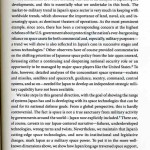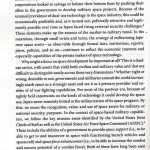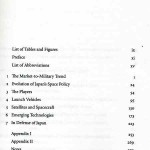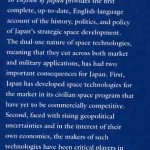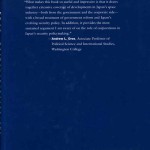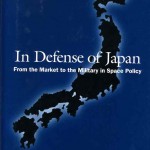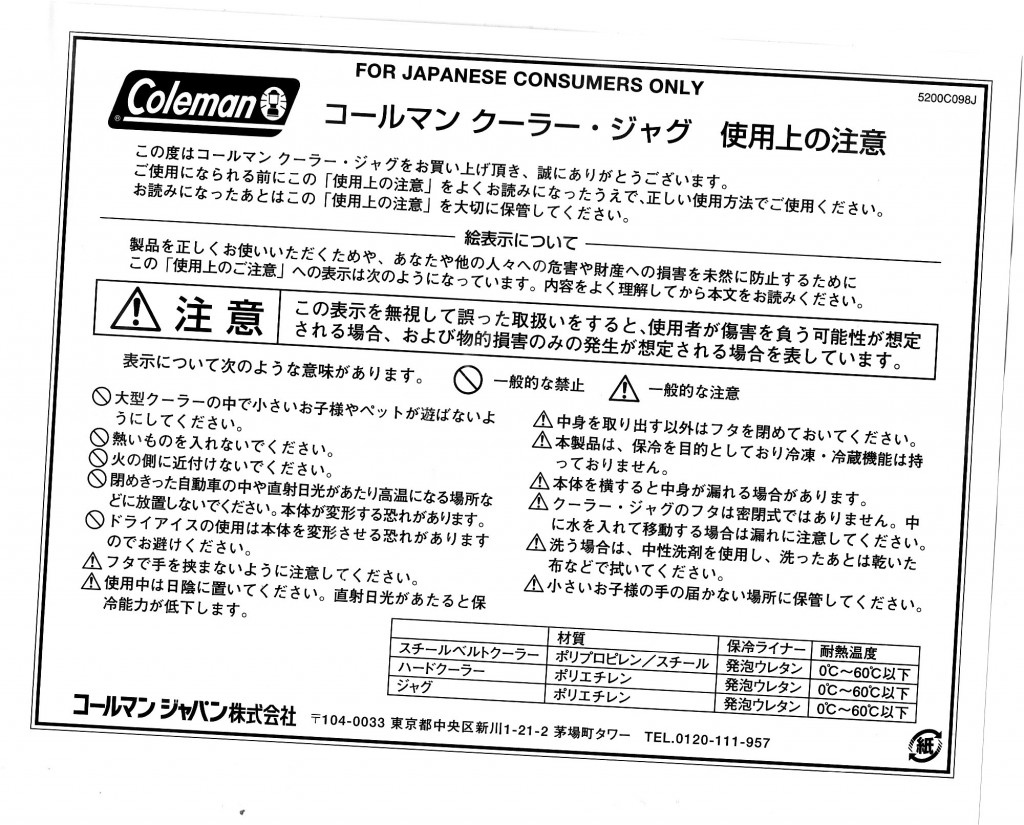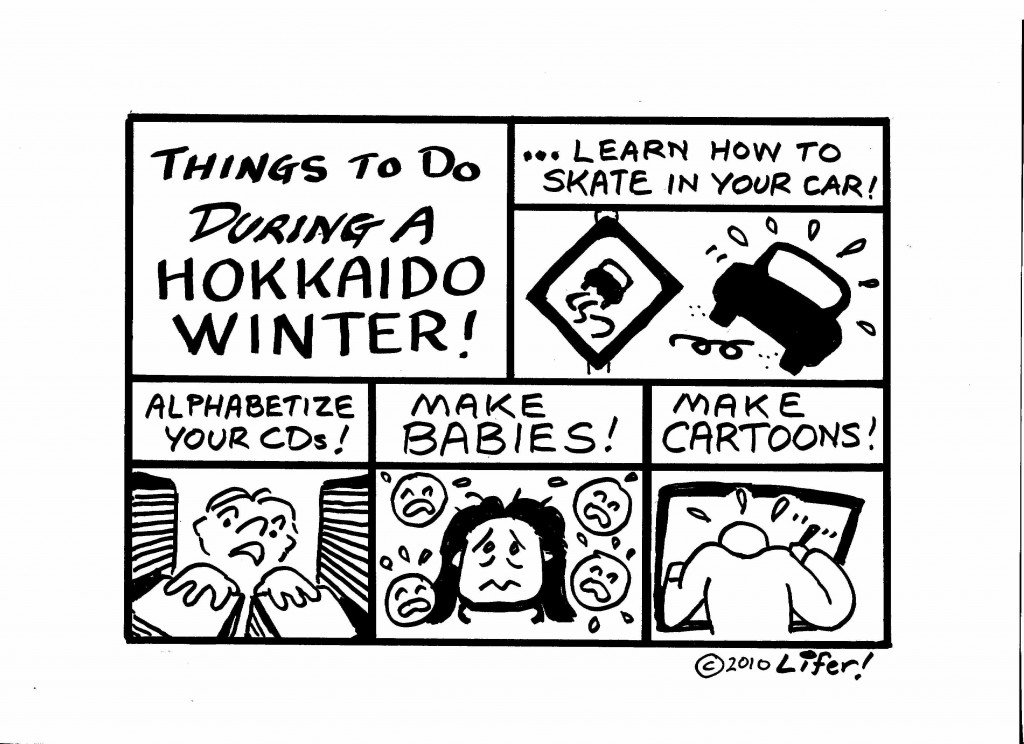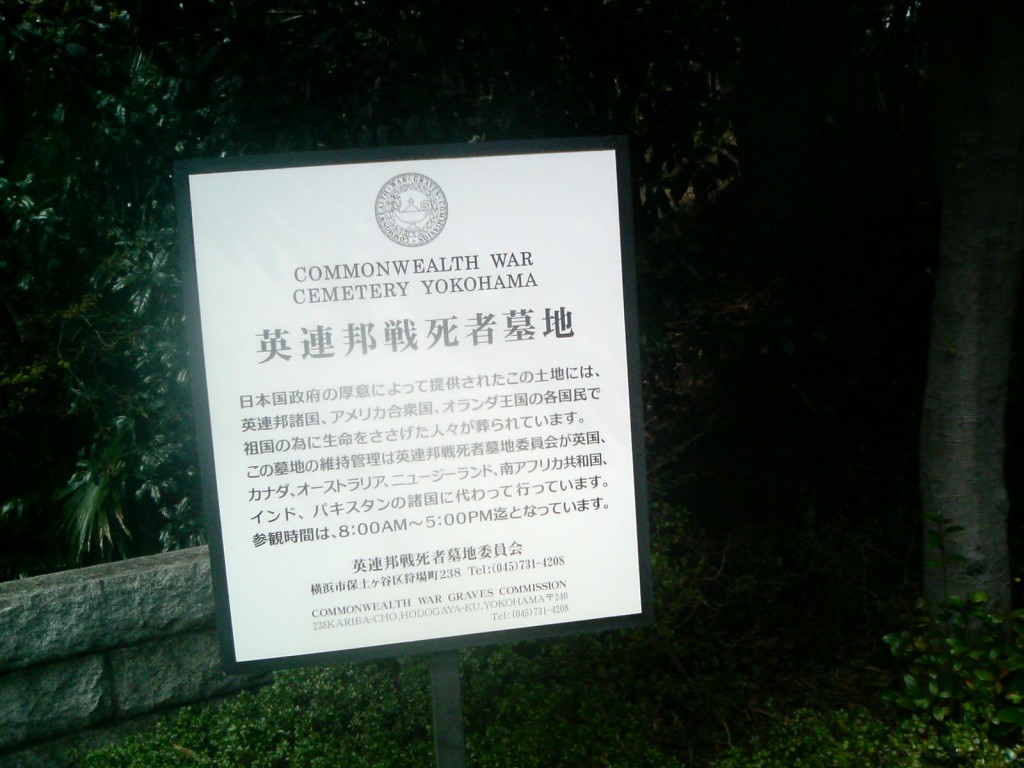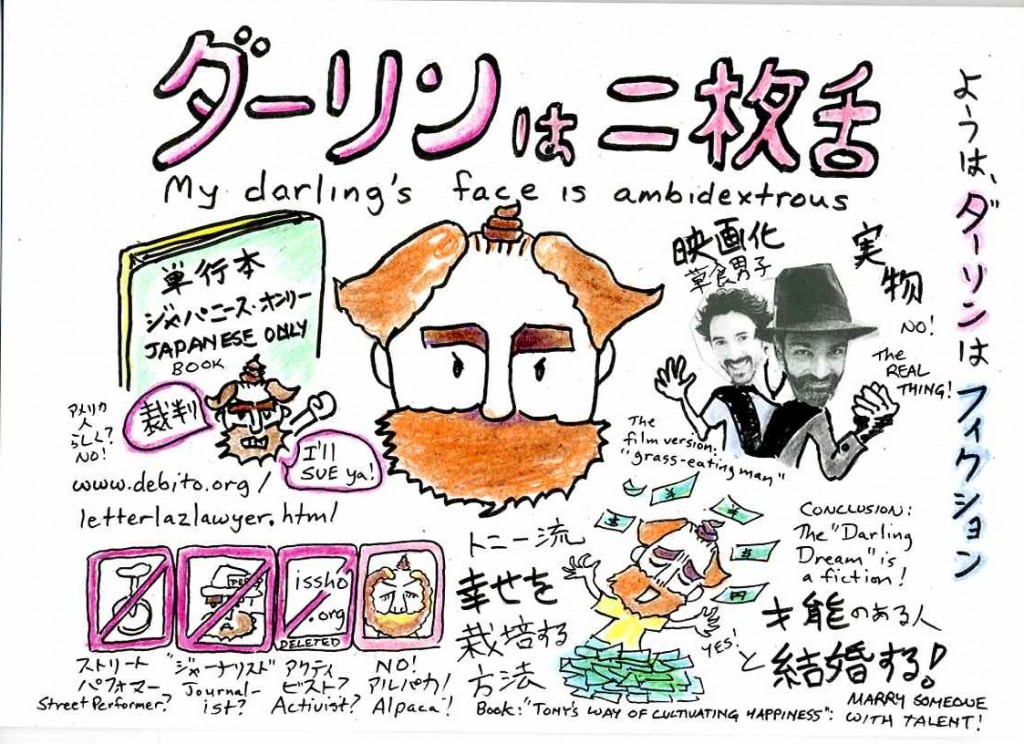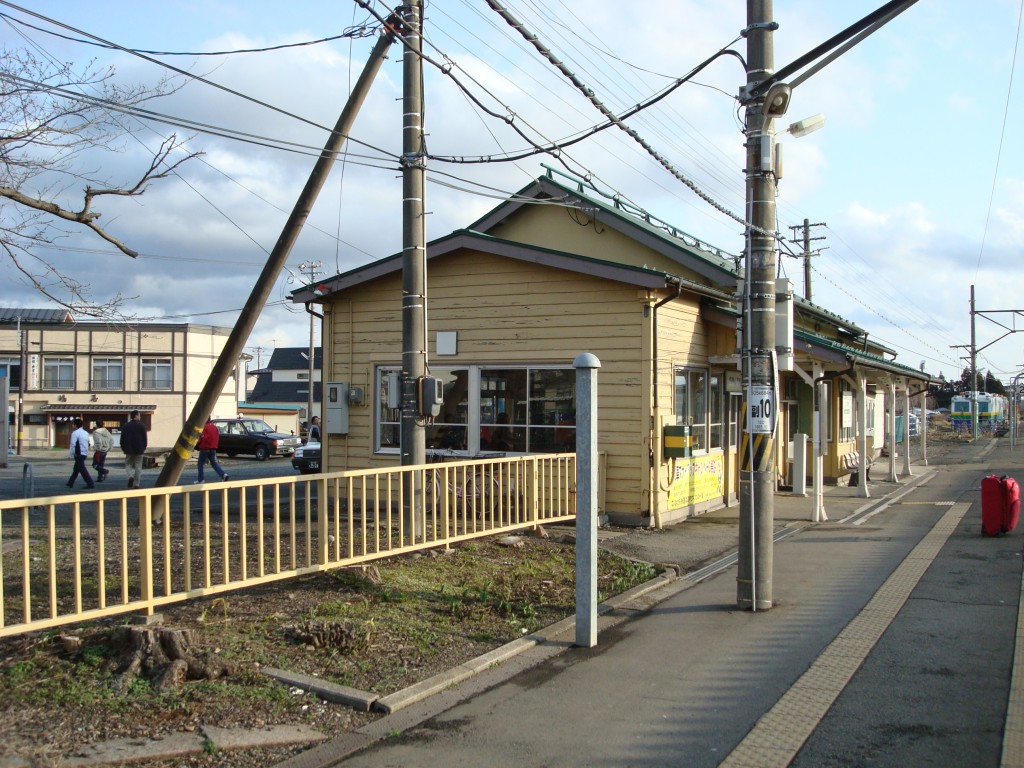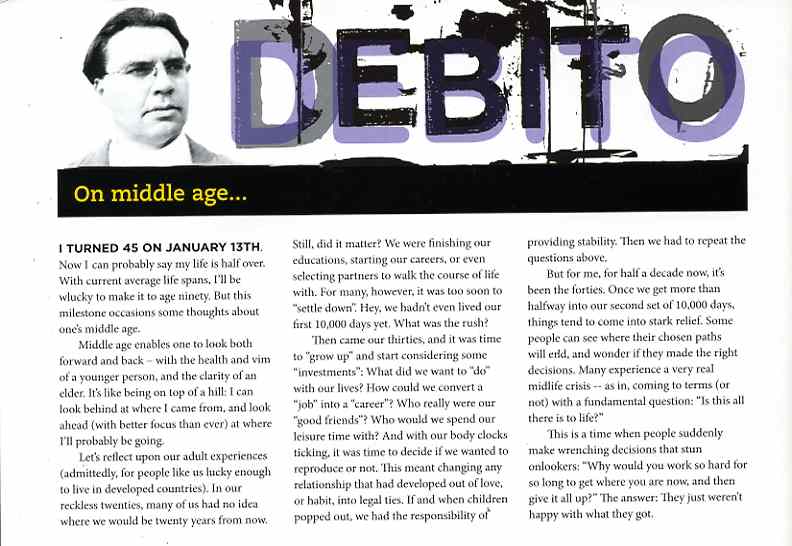mytest






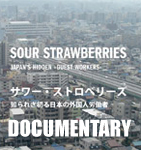

Hi Blog. I have been hearing word from several sources about the new draconian laws being enacted in Arizona to catch illegal migrant workers, including legally-sanctioned racial profiling, and stopping people on the street for ID checks. Many have said that it seems Arizona has taken a page out of the GOJ’s handbook for dealing with NJ in Japan. The difference, however, is that 1) the US dragnet is (necessarily) a coarser mesh (as Japanese authorities have a wider view of who doesn’t “look Japanese”, since anyone can “look American” and more sophistication is needed over there), and 2) it’s caused a level of controversy that has never happened in Japan (imagine street protests to this degree, even a J prime minister denouncing it?).
I believe it’s only a matter of time (and it will take some time) before the Arizona authorities stop the wrong person on racial grounds, other American laws kick in to protect people against racial discrimination, and American courts rule this Arizona law unconstitutional. Wait and see.
That just ain’t gonna happen in Japan for obvious reasons: We ain’t got no legal sanctions against racial discrimination, let alone this degree of people caring for the human rights of foreigners. Arudou Debito in Sapporo
///////////////////////////////////////////
Mark in Yayoi writes:
Hey Debito, a bill just signed in Arizona:
http://abcnews.go.com/WN/obama-arizona-immigration-bill-misguided/story?id=10457567
===========================
Arizona’s Gov. Brewer Signs Controversial Immigration Bill
Brewer Says Law is Necessary to Solve a ‘Crisis,’ But Obama Calls Bill ‘Misguided’
By DEVIN DWYER and HUMA KHAN
ABC NEWS April 23, 2010 — Arizona Gov. Jan Brewer signed a controversial immigration bill into law today that will give local law enforcement greater authority to ferret out and arrest illegal immigrants.
Immediately before signing the bill into law, Brewer said that the legislation “represents another tool for our state to use as we work to solve a crisis that we did not create and that the federal government refuses to fix.”
“We in Arizona have been more than patient waiting for Washington to act,” Brewer said. “But decades of inaction and misguided policy have created a dangerous and unacceptable situation.”
The bill takes effect in 90 days after the current legislative sessions over the next several weeks.
“I firmly believe [the law] represents what’s best for Arizona,” said Brewer. “Border-related violence and crime due to illegal immigration are critically important issues for the people of our state, to my administration, and to me as your governor and as a citizen.”
The signing came just a few hours after President Obama harshly criticized the legislation, calling it “misguided.” The president also instructed the Justice Department to examine the Arizona law to see if it would violate civil rights.
Obama criticized the bill at a naturalization ceremony in the White House Rose Garden for active duty service members from 24 countries.
The president said if Congress fails to enact comprehensive immigration reform at the national level, “We will continue to see misguided efforts opening up around the country.”
The absence of a federal resolution of the controversial issue, he said, “opens the door to irresponsibility by others,” and he cited “the recent efforts in Arizona, which threaten to undermine basic notions of fairness that we cherish as Americans.”
So far this year, Congress and the administration have made little progress in advancing legislation on the issue.
Outside Capitol Building, Crowds Protest Decision
After the signing, crowds outside of the state capitol building erupted in anger. Carrying signs and American flags, they marched nearby, protesting the governor’s decision.
Brewer defended the law against claims that it is discriminatory, saying that she had worked for weeks to rework the language to strengthen civil rights protections. The governor also issued an executive order to develop training for state law enforcement to prevent racial discrimination or profiling.
“As committed as I am to protecting our state from crime associated with illegal immigration, I am equally committed to holding law enforcement accountable should this statue ever be misused to violate an individual’s rights,” she said.
The Arizona law makes it a crime under state law to be in the U.S. illegally and allows police to arrest and question suspected undocumented persons about their status without a warrant. It also criminalizes the transporting of an illegal immigrant anywhere in the state, even if by a family member.
Brewer, who faces a tough Republican primary in August, signed the same bill that former Arizona Gov. Janet Napolitano, a Democrat, vetoed three times.
Brewer was under intense pressure to not sign the legislation. Civil rights groups have decried the sweeping measure as opening the door to racial profiling and sowing distrust between Hispanics and the law enforcement groups charged with keeping them safe. Others said the law will pull resources from fighting more-serious crimes.
Thousands of people wrote or called the governor’s office, with a 10-to-one majority opposing the bill, a spokeswoman said.
“I don’t think anything has been this extreme until this point,” said Bridgette Gomez, a 24-year-old math tutor. “The evil is racial profiling, to think that you’re going to always have to show identification. Because I’m tan, I must be illegal.”
But supporters of the law, including U.S. Sen. John McCain, R-Ariz., have said it will help solve an illegal immigration crisis the federal government so far has not acted swiftly enough to contain.
Ariz. Immigration Bill Supporters Say They’re Enforcing Law
“Illegal is illegal,” said the bill’s sponsor, Republican state Sen. Russell Pearce. “We’ll have less crime. We’ll have lower taxes. We’ll have safer neighborhoods. We’ll have shorter lines in the emergency rooms. We’ll have smaller classrooms.”
An estimated 10.8 million immigrants live illegally in the U.S., according to the most recent Department of Homeland Security figures. About 460,000 live inside Arizona’s borders. Now that the Arizona bill has become law, it likely will face constitutional challenges.
President Obama said he’s instructed the Justice Department to “closely monitor” the situation and “examine the civilian rights” and other implications of the legislation.
The Mexican American Legal Defense Fund (MALDEF) and other groups are also preparing to challenge the legislation.
“The Constitution is pretty clear about having one set of rules,” said Thomas A. Saenz, general counsel and president of MALDEF. “Now, you have the state of Arizona coming along and creating an obstacle to federally mandated priorities.”
Still, state Sen. Pearce, a former deputy in the Maricopa County Sherriff’s Office, which is known for cracking down on illegal immigrants, said he’s merely trying to enforce law that’s already on the books.
“Illegal is not a race. It’s a crime. And in Arizona, we’re going to enforce the law … without apologies,” he said. “It’s just that simple.”
Vulnerable to Legal Challenges?
California attempted to pass a similar measure in 1994 — Proposition 187 — that was designed to keep illegal immigrants from using health, education and other social services.
Even though it passed, it was struck down by a federal court on the basis of constitutionality.
Similar legal challenges against Arizona are inevitable, Saenz said, and it will likely end up costing the state millions of dollars.
“Arizona is going to face very serious consequences if it enacts it,” Saenz said, comparing it to the experience in California, where the legislation was a “tremendously wasteful diversion of resources.”
“There was a palpable impact on international trade to California, in particular,” Saenz said. “It became clear over time that Mexican companies began to take their commerce through Texas and other border states because of pervasive hostility.”
But it’s high time states step up to the plate and do something about illegal immigrants, Pearce said.
“I would think this is a great opportunity to codify states’ inherent authority,” he said. “We created the federal government. We’re in charge. Constitutionally, we have inherent authority. It’s time to step up to the plate and start enforcing the law.”
This is not the first time Arizona’s state laws have come under fire. In 2005, the state made smuggling humans a state crime, and in 2007, it prohibited employers from knowingly hiring illegal immigrants.
Earlier this week, the state House voted for a provision that would require President Obama to show his birth certificate if he wants to be on the state’s ballot in the next presidential election.
Before the signing, protesters had hoped to build grassroots momentum to convince Gov. Brewer to veto the bill — an effort that ultimately failed.
“You hear story after story of youth that don’t find out until they’re 16 that they are undocumented because their parents didn’t tell them,” said Alicia Contreras, 26, a student at Arizona State University. “Arizona is ground zero for these type of immigration laws, and as a youth — high school, college students — we need to come together.”
ENDS
=============================
It looks like the state of Arizona is going to become exactly like the nation of Japan when it comes to immigrants and their civil liberties. Mandatory carrying of papers, police empowered to question people and demand papers, punishment up to 6 months in jail and $2500 fine.
Obama has already spoken out against it. (Imagine a prime minister doing that here!)
Provisions of the law here:
http://abcnews.go.com/US/wireStory?id=10463049
=============================
Key Provisions of Arizona Immigration Legislation
Key provisions of Arizona immigration legislation signed into law by governor
The Associated Press
Key provisions of Arizona’s immigration legislation, signed into law by Arizona Gov. Jan Brewer on Friday:
— Makes it a crime under state law to be in the country illegally by specifically requiring immigrants to have proof of their immigration status. Violations are a misdemeanor punishable by up to six months in jail and a fine of up to $2,500. Repeat offenses would be a felony.
— Requires police officers to “make a reasonable attempt” to determine the immigration status of a person if there is a “reasonable suspicion” that he or she is an illegal immigrant. Race, color or national origin may not be the only things considered in implementation. Exceptions can be made if the attempt would hinder an investigation.
— Allow lawsuits against local or state government agencies that have policies that hinder enforcement of immigration laws. Would impose daily civil fines of $1,000-$5,000. There is pending follow-up legislation to halve the minimum to $500.
— Targets hiring of illegal immigrants as day laborers by prohibiting people from stopping a vehicle on a road to offer employment and by prohibiting a person from getting into a stopped vehicle on a street to be hired for work if it impedes traffic.
— The law will take effect by late July or early August.
=================================
It’s as if they copied this stuff straight out of NPA guidelines!
This really is disgusting. Commenters on the two stories don’t seem to be cognizant of the plight of legal immigrants who don’t yet have US nationality (perhaps because with dual nationality being allowed in the US, there’s no reason to remain a “foreigner” if you’re long-term), and are focusing only on the difference between US citizens and illegals.
Fortunately, people are protesting it already, both online and in the real world. It’ll be interesting to see what happens with the inevitable falsely-accused people. Hopefully the news outlets won’t drop the story. MIY
/////////////////////////////////////////////
From Times Online (London)
April 22, 2010
Arizona Bill ‘puts racial profiling into law’
Giles Whittell, Washington, Courtesy of AI
http://www.timesonline.co.uk/tol/news/world/us_and_americas/article7104230.ece#cid=OTC-RSS&attr=797093
An anti-immigration law condemned as a licence for racial profiling is expected to come into force in Arizona within the next 48 hours. The law would be the first in the US to give police the power to stop citizens and demand proof of legal residence in the US merely on suspicion of not carrying appropriate papers.
Arizona’s Republican Governor, under pressure from right-wing rivals for her job, has until Saturday afternoon to sign or veto the measure. The Catholic Archbishop of Los Angeles, a leading champion of immigration reform, has denounced it as a mandate for “German Nazi and Russian Communist techniques” of snooping and betrayal.
Up to ten other states are said to be considering similar laws as pressure mounts on the Republican Right and along America’s southern border for state-based immigration crackdowns in the absence of federal immigration reform.
The Arizona Bill would make it a crime for legal immigrants not to carry their alien registration papers, and would allow police to arrest those unable to produce them — potentially upending the presumption of innocence underpinning US law and the principle that its enforcement should be colour-blind.
“It basically puts racial profiling into law,” a spokeswoman for the Senate Democrats in the Arizona state assembly told The Times yesterday.
One of the measure’s Republican sponsors, Representative John Kavanagh, called it “a comprehensive immigration enforcement bill that addresses the concerns of our communities, constituents and colleagues … gives our local police officers the tools they need to combat illegal immigration”.
The progress of the hugely controversial Bill through the state assembly has been closely watched throughout the country, and helped by a wave of anger over the murder of an Arizona rancher 20 miles from the Mexican border last month. Robert Krentz, 58, was gunned down on his own property by an unknown assailant whom police assume was an illegal immigrant involved in a drug-smuggling operation.
In a sign of the pressure on moderate conservatives to be seen to get tough on illegal immigration in an election year, Senator John McCain, once a champion of progressive immigration reform, has stunned former colleagues by endorsing the Bill. “The state of Arizona is acting and doing what it feels it needs to do in light of the fact that the federal government is not fulfilling its fundamental responsibility — to secure our borders,” he told Fox News as the measure was approved by the State Assembly on Monday.
The Bill also has the support of Sheriff Joe Arpaio of Maricopa County, the senior law enforcement official in the Phoenix area, who has gloried for decades in the unofficial title of “America’s toughest cop”. Mr Arpaio has courted sanction by federal authorities for years by encouraging his deputies to stop those they suspect of being illegal immigrants and demand to see their papers.
Arizona has the highest per capita population of undocumented aliens, with 460,000 at the latest estimate. Cardinal Mahoney has called the new Bill “the country’s most retrogressive, mean-spirited and useless anti-immigrant law”.
The Arizona state assembly has invited further controversy by granting initial approval to a Bill that would require President Obama to submit his birth certificate before having his name entered on ballot papers for the 2012 presidential election.
Accusations that Mr Obama was not born in the US and is therefore not eligible for the Presidency have lingered in the blogosphere since his candidacy gained national traction in 2007. As a matter of record, he was born on August 4, 1961, in Hawaii where his birth certificate is on file. His campaign has released a certified scanned copy of the certificate but some 40 per cent of Americans remain doubtful or unsure where he was born, according to polls.
ENDS






![]()

